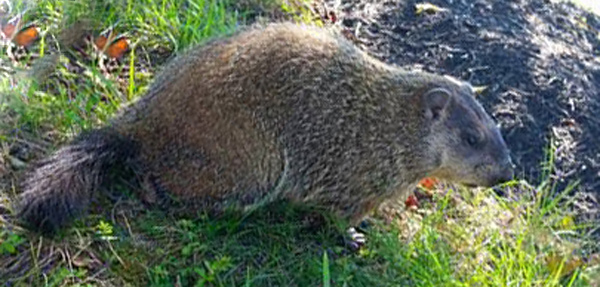- info@wildlife-removal.com
Call us for help in your town
Wildlife Removal Education
The Groundhog's Natural Diet and How It Gets Food
Need groundhog removal in your hometown? We service over 500 USA locations! Click here to hire us in your town and check prices - updated for year 2020.
There is no doubt that when a homeowner goes into a garden only to find that a crop of potatoes or carrots has been decimated by a groundhog that it is a hugely frustrating experience. The truth that is worth remembering is that these examples are only a relatively small number of groundhogs, and that the vast majority of the population of the species are usually found in wild areas. This is a closer look at what most groundhogs will eat when they are living in their natural surroundings.

Vegetables And Plants
This food group makes up the largest proportion of the groundhog's diet, and their adaptable digestive system means that they can eat a huge variety of plant matter, with wild grass and vegetation being the most common source of sustenance. Living on the fringes of the forest, the groundhog is also able to eat any fruits or berries that grow in the area, while coming across vegetable gardens or agricultural crops is a bounty for these animals.
Nuts
Making up a smaller proportion of the groundhog's diet, nuts are also a valuable source of nutrition when they are in season. One of the interesting aspects of this is that groundhogs have often been seen to imitate squirrels when they eat nuts, standing on their hind legs to do so. However, groundhogs will not store nuts in the same way that squirrels do.
Small Insects
Along with the range of vegetable matter and nuts that make up the majority of the groundhog's diet, there are a number of small insects that the groundhog can digest, and when the opportunity arises they will certainly take advantage of it. These insects can include grubs, grasshoppers and snails.
The Foraging Habits Of The Groundhog
Groundhogs will usually find a significant amount of their food around their burrows, as they generally have fairly small territories and will protect the food sources on their territory against other animals. When it comes to finding insects, the most common way that this will happen is when the groundhogs are digging out new tunnels, and they will consume many of the insects that they uncover when they are digging those tunnels. Another interesting fact is that groundhogs do not generally drink water, but rather absorb all of the fluid that they need from the food that they eat.
Go back to the Groundhog Removal page.


















